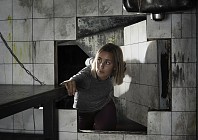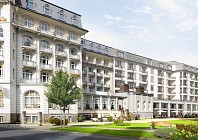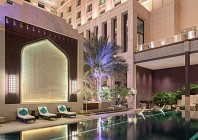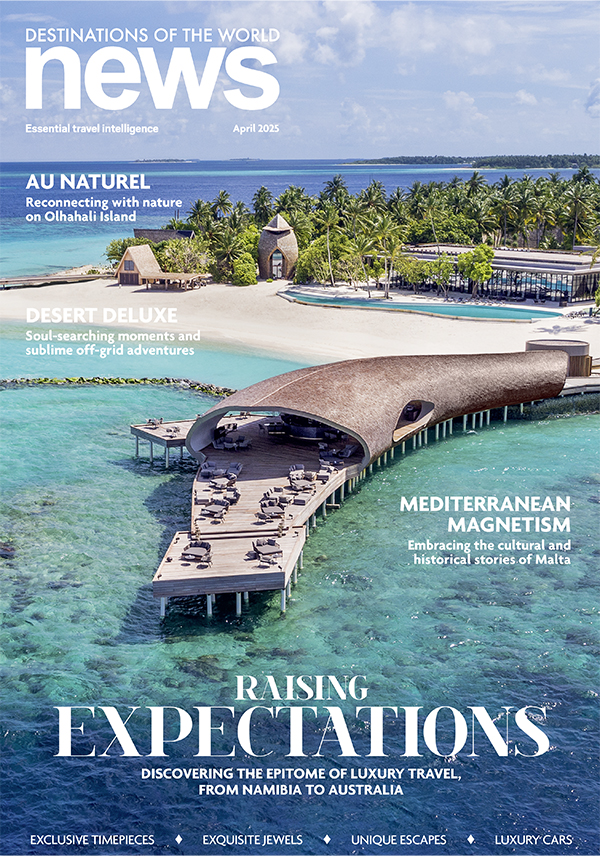But what’s special about Gstaad is how laid back it rolls. Denizens, some of their families dating back five generations, rub shoulders with contemporary beauty queens, maharajahs and sporting superstars over coffee and strudel, and wander the myriad summer festivals together. Don’t miss the Hublot Polo Gold Cup Gstaad in August, where international teams mount temperamental Arabian horses and battle for victory. Music lovers should schedule their stay for The Menuhin Festival Gstaad, featuring an an array of musical concerts between July and September, honouring the revered violinist and conductor who called this place home. Sports buffs won’t want to miss the FIVB Beach Volleyball World Tour – Grand Slam Gstaad, or the Crédit Agricole Suisse Open Gstaad (ATP Tennis Tournament), both unexpected, jawdropping spectacles, scheduled in July.

The Gstaad Palace is an excellent venue to enjoy lunch on the terrace
Of course skiing (and après skiing, a vigorous sport itself) dominates in winter. But the 220 kilometres of amply proportioned trails that link four Alpine valleys and ten villages which make Gstaad’s winter sports so famous also ensure this mountain getaway prevails as an evocative summer destination. Hikers and mountain bikers will find any number of routes through wildflower dotted meadows, up verdant, cow inhabited inclines and down rollicking, adrenaline-awaking paths. Kayakers can paddle through its Alpine lakes, and white water rafters can ride the rapids. Those who still hanker to ski can join locals who s-turn down the Glacier 3,000, a snow covered peak reached by gondola, complete with a restaurant, slopes aplenty and an area for toboggan rides. Atop Wilspile Gstaad, special scooters can be rented to whisk you down the mountain. And, more passive, but just as exhilarating, ride the scenic Swiss railway – a workout for your eyes. Try the famous Golden Pass, a trip that runs from Montreaux on Lake Geneva, via Gsaad, to Lake Thun, Lucerne and on to central Switzerland.
Afterwards, the place to slumber is The Palace, a century-old, five-star hotel that caps a hill mid-village in Gstaad. With turrets and towers galore, it welcomes guests as fellow members of a royal family. Not stuffy, you’ll find the whole brood happy here – kids splashing about in the swimming pools, teens batting balls across the hotel’s four tennis courts, and elders, some who have holidayed here for six decades, staking out their regular bar stool for tea parties. For a celebratory weekend, book a penthouse suite and bathe in a bathtub overlooking the snow-capped Alps, eat dinner at rustic La Fromagerie, the in-house Swiss-style restaurant which specialises in truffle fondue, then dance it off at GreenGo, one of the world’s most bucket list discos.
For the ultimate Palace adventure, try to spend at least one of your regal Gstaad nights in the Palace’s Walig Hut, set high above the village at 1,700 metres amid a flower filled meadow. An ancient farmer’s home, this rough-hewn cabin dates back to 1786, and though it has undergone a painstakingly restoration to introduce modern comforts, it manages to retain an authentic character. Superlative for honeymooners, the cabin can sleep two adults and two children, or can be rented for lunch or dinner.
Leaving my tiara and fancy attire back at the hotel, I hike up to the cabin just before dusk. Standing on the porch, looking out amid the jagged mountain peaks and the sweeping patchwork of color below, I watch the sun plummet in an explosion of hues to the symphony of cow bells. While I sip a Swiss wine (chilled in a cow trough), the chef prepares a classic country meal of cheese, charcuterie and salad, and a maid fluffs my feather pillow and thick duvet, preparing it for the evening. The serenity of the moment seizes me. This is the princely life redefined.

Nothing says luxury and leisure like summer in the Swiss Alps
But there’s more to Switzerland than crowns and turrets. In Scuol, a picturesque hamlet, wedged in the Lower Engadine region of Switzerland, I discover a whole new language. “Allegra,” says the woman at reception desk of Hotel Engiadina, an elegant, old world, lodge bedecked with carved wood details, lace and centuries-old farm implements. “Allegra,” I reply, uttering my first words in Romansch, an ancient language spoken only in this tiny corner of the world. My mood instantly lifts – who wouldn’t be cheered when exchanging pleasantries using a word, which literally translates to “joy”?
Romansch is Switzerland’s fourth official language, falling last in line after German, French, and Italian. One percent of all Swiss speak it – and most of those live in this in section of Switzerland, near the Austrian border. While the influences of tourism have diluted the usage of Romansch in global villages like St. Moritz, this more rural part of the region lives this vibrant language. School is taught in it, store clerks do business with it, radio blares it, and hip hop artists rap it. Used for signage, it looks a bit like misspelled Italia and sounds melodic, like a gurgling stream. Thought to date back 1,500 years, Romansch might be considered a linguistic time capsule. A spoken Latin left behind by Roman occupiers, it collected smatterings of Celtic and Etruscan dialects. It stayed local thanks to the region’s harsh winters, towering peaks, and rugged terrain.
During dinner in the Hotel Engiadina’s pine-walled restaurant that night, I speak my second Romansch word for the first time. “Viva!” I say, clinking wine glasses with a friendly Swiss couple sitting at the table next to me, inspiring a contagion of toasting in the intimate restaurant with diners raising their glasses, nodding and crooning “Viva” as if it were a song and we were one big family having dinner together. Viva is as evocative as allegra when translated and means “live well” or “to life.” This soulful toast underscores the celebratory modus operandi of Engadine’s vivacious mountain community. As a person eating alone, I feel welcomed and embraced by it.
Found at the end of the train line, the small town of Scuol balances on the banks of the rushing River Inn. Best known for its healing spring waters, it’s a warren of white-washed medieval houses, each etched with sgrafitto, a fresco-like adornment born in the region. Cobbled alleyways lead to Bogn Engiadina, an immense hydrotherapy haven, composed of multiple saunas, steams, baths, thermal pools, and grottos, the perfect antidote to long afternoons spent hiking. On one outing, I learn my third Romansch word.
“Guarda,” says an old man, tapping his cane. “See there,” he says in English, when I look perplexed. He points to a mountain path, visible between ancient houses. “Look there. That’s where Hannibal passed atop an elephant.”
“Guarda,” I respond. And, I can just about imagine it – elephant and all.

Enjoy the view both inside and out when summering in the Swiss Alps
The Golden Book
Gstaad Palace
Tel: +41 33 748 5000
Hotel Engiadina
Tel: +41 81 851 5454












